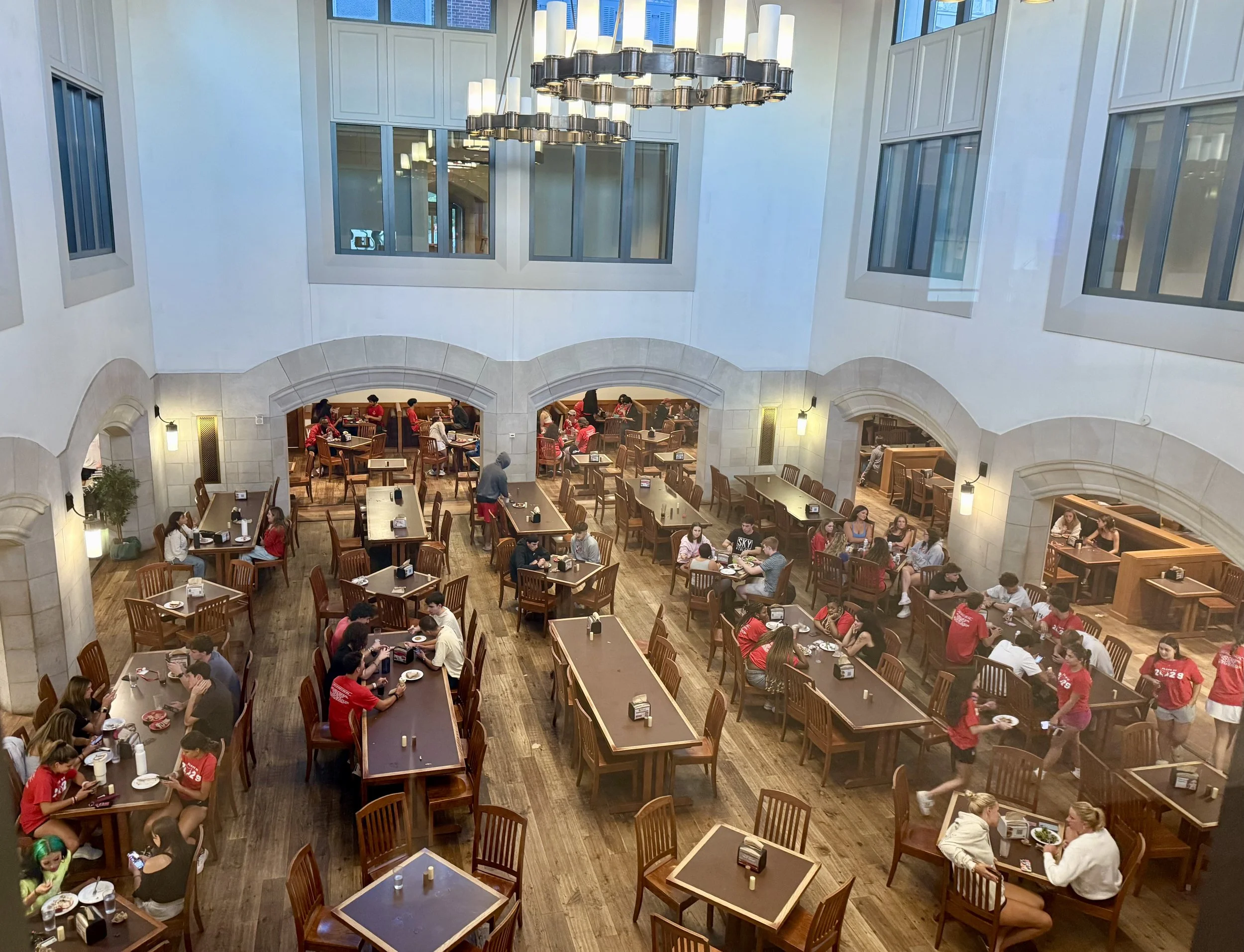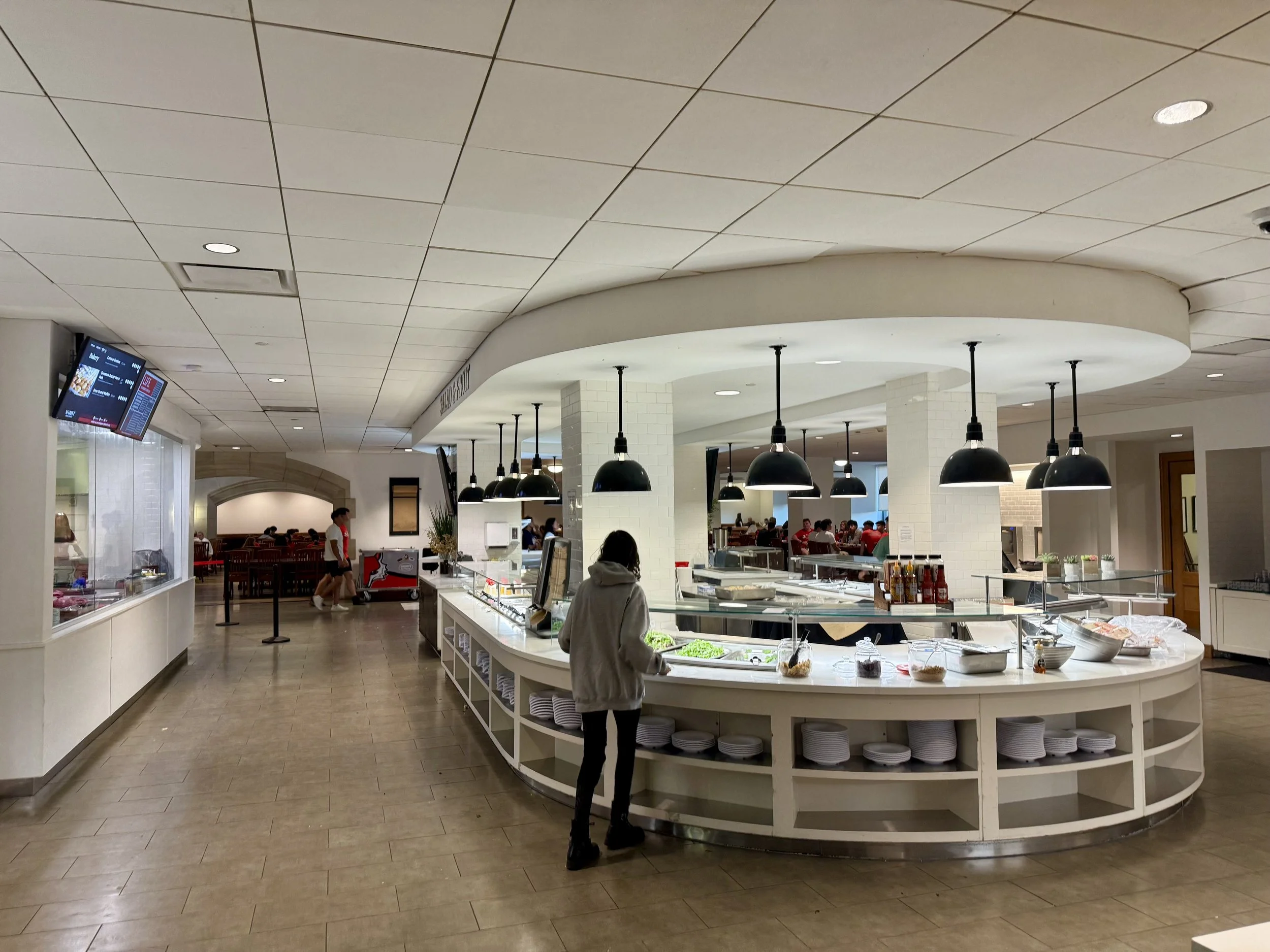Marist Dining Services Changes Its Meal Plans for the First Time in 30 Years
Students eating in Murray Dining Hall. Photo by Ben Leeds '26
With meal plans activated and dining locations open, campus dining is back in full swing. However, for the first time in 30 years, fall 2025 marks the start of various updates made by Marist Dining Services.
This semester, students return to campus with a new dining system, featuring the introduction of Den Dollars, a variety of meal plan options and a shift away from meal swipes.
“What students were overwhelmingly looking for was more autonomy in how they applied their meal plans across campus,” explained Mike Eggert, the general manager for Gourmet Dining. “We wanted to ensure that we retained the culture that is the first-year experience in the dining hall by offering an ample amount of swipes for frequent use and also increasing the number of opportunities they have to access the retail shops across campus.”
One of the most notable updates is the introduction of Den Dollars instead of Thrifty Cash. Just like Thrifty Cash, Den Dollars can be used at all of the on-campus dining locations to purchase food and drinks.
Though Den Dollars and Thrifty Cash are almost identical, unlike Thrifty Cash, students’ Den Dollars do not roll over from the fall to the spring semester. However, if you add additional funds to your account, those will carry over, as long as you have a meal plan.
Additionally, meal swipes at various dining locations have been discontinued. Therefore, the previous option of getting a meal, a drink and a snack such as fruit or chips is no longer available. If students want a meal, drink and snack, they’ll have to pay for each of those separately.
According to Gabby Lincini ‘23, the director of communications at Dining Services, and Eggert, Den Dollars essentially combine meal swipes and Thrifty Cash, allowing students to make more autonomous choices when dining on campus.
A student using the salad bar at Murray Dining Hall. Photo by Ben Leeds '26
The five new dining plans offer a range of options, depending on each student’s preference. Flex 3500, Flex 2600, Flex 1650 and Flex 825 all offer Den Dollars; each includes a corresponding amount of Den Dollars indicated by their name.
These plans also include 25% off access to the Murray Dining Hall door rate, making the breakfast rate $6.38 and lunch and dinner rates $13.88. Those who don’t have meal plans will pay $8.50 to access the dining hall during breakfast hours, and $18.50 during lunch and dinner hours.
The most significant plan adjustment lies in the Murray Plus plan. This plan offers 235 swipes into Murray Dining Hall at any time, $500 Den Dollars and access to the 25% off dining hall door rate.
While this plan is still required for first-year residents, it is a significant change from the previous year’s freshman meal plan: The Anytime Plan, which gave students unlimited swipes into Murray Dining Hall and $150 Thrifty Cash, a much lower Thrifty balance than other plans in the past years, which all included at least $350 Thrifty Cash and 30 meal swipes.
“We knew we had to retain meal plans for first-year students that would allow them as much access as they need, seeing as this is the first time most of them are away from home. The school agrees that it's kind of the best of both worlds,” Eggert said.
According to Marist Dining Services, these changes have been made based on student feedback and come two full years after Gourmet Dining began its partnership with Marist.
Eggert noted, “This was a solid collaboration that was catalyzed by feedback from the Student Government Association (SGA). We had focus groups with SGA, and we used all the data from the first two years of Gourmet at Marist. This allowed us to create this plan working in concert with the University to meet the needs of the first-year students, primarily.”

